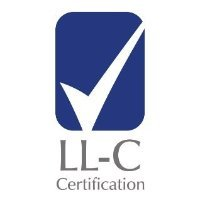ISO 9001 QUALITY MANAGEMENT SYSTEM:
The global adoption of ISO 9001 may be attributable to a number of factors.
A number of major purchasers require their suppliers to hold ISO 9001 certification. In addition to several stakeholders’ benefits, a number of studies have identified significant financial benefits for organizations certified to ISO 9001, with a 2011 survey from the British Assessment Bureau showing 44% of their certified clients had won new business.
While the connection between superior financial performance and ISO 9001 may be seen from the above, there remains no proof of direct causation, though longitudinal studies, such as those of Corbett et al (2005) may suggest it. Other writers such as Heras et al (2002) have suggested that while there is some evidence of this, the improvement is partly driven by the fact that there is a tendency for better performing companies to seek ISO 9001 certification.
The mechanism for improving results has also been the subject of much research.
Identified operational improvements (cycle time reduction, inventory reductions, etc.) as following from certification. Buttle (1997) and Santos (2002) both indicated internal process improvements in organizations leading to externally observable improvements.
Results indicate that firms outperform their control group during the post implementation period and effective implementation of total quality management principles and philosophies leads to significant wealth creation. The benefit of increased international trade and domestic market share, in addition to the internal benefits such as customer satisfaction, interdepartmental communications, work processes, and customer/supplier partnerships derived, far exceeds any and all initial investment.
ISO 9000 was first published in 1987.
It was based on the BS 5750 series of standards from BSI that were proposed to ISO in 1979.
Its history can however be traced back some twenty years before that when the Department of Defense published its MIL-Q-9858 standard in 1959. MIL-Q-9858 was revised into the NATO AQAP series of standards in 1969, which in turn were revised into the BS 5179 series of guidance standards published in 1974, and finally revised into being the BS 5750 series of requirements standards in 1979, before being submitted to ISO.
The development of the ISO 9000 series is shown in the diagram to the right.
.jpg)
.jpg)
Quality Management System Process Approach
This International Standard promotes the adoption of a process approach when developing, implementing and improving the effectiveness of a quality management system, to enhance customer satisfaction by meeting customer requirements. Specific requirements considered essential to the adoption of a process approach are included in 4.4.
Understanding and managing interrelated processes as a system contributes to the organization’s effectiveness and efficiency in achieving its intended results. This approach enables the organization to control the interrelationships and interdependencies among the processes of the system, so that the overall performance of the organization can be enhanced.
The process approach involves the systematic definition and management of processes, and their interactions, so as to achieve the intended results in accordance with the quality policy and strategic direction of the organization. Management of the processes and the system as a whole can be achieved using the PDCA cycle with an overall focus on risk-based thinking aimed at taking advantage of opportunities and preventing undesirable results.
The application of the process approach in a quality management system enables:
understanding and consistency in meeting requirements;
the consideration of processes in terms of added value;
the achievement of effective process performance;
improvement of processes based on evaluation of data and information.
Risk-based thinking
Risk-based thinking is essential for achieving an effective quality management system.
The concept of risk-based thinking has been implicit in previous editions of this International Standard including, for example, carrying out preventive action to eliminate potential nonconformities, analyzing any nonconformities that do occur, and taking action to prevent recurrence that is appropriate for the effects of the nonconformity.
To conform to the requirements of this International Standard, an organization needs to plan and implement actions to address risks and opportunities. Addressing both risks and opportunities establishes a basis for increasing the effectiveness of the quality management system, achieving improved results and preventing negative effects.
Opportunities can arise as a result of a situation favourable to achieving an intended result, for example, a set of circumstances that allow the organization to attract customers, develop new products
and services, reduce waste or improve productivity.
Actions to address opportunities can also include consideration of associated risks. Risk is the effect of uncertainty and any such uncertainty can have positive or negative effects.
A positive deviation arising from a risk can provide an opportunity, but not all positive effects of risk result in opportunities

CONFIDENCE
SECURITY
FLEXIBILITY
NOTE: THIS WEBSITE DOES NOT USE COOKIES OR ANY MEANS OF VISITOR CONTROL.

Certification, inspection and audit solutions focused on business optimization.




